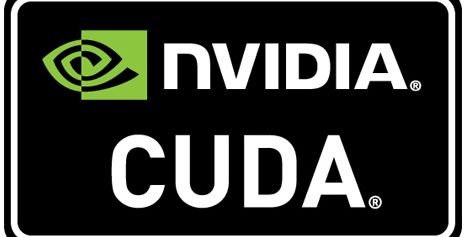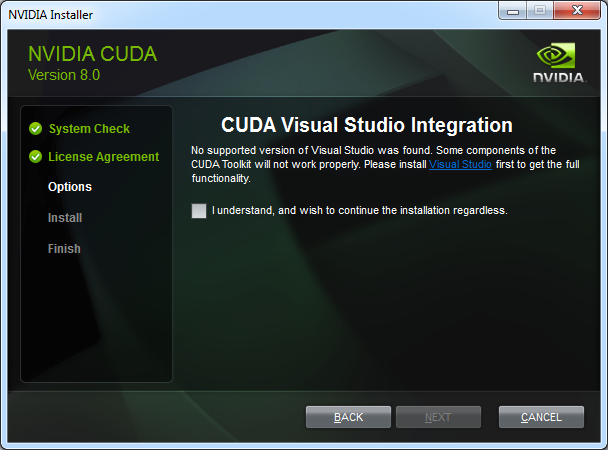

- Check nvidia cuda toolkit version install#
- Check nvidia cuda toolkit version drivers#
- Check nvidia cuda toolkit version update#
- Check nvidia cuda toolkit version driver#
- Check nvidia cuda toolkit version windows 10#
To check the GPU version, open the Device Manager and type ‘device manager’. In order to enable CUDA in Windows, your graphics card must support CUDA. If you’ve followed the steps correctly, you should have a CUDA-capable computer. Once the installation is complete, you can use the bandwidthTest program to check your system’s communication with the CUDA-capable device.
Check nvidia cuda toolkit version driver#
The results may vary on different systems, but the most important ones are that the driver matches the device, the test passed, and the CUDA Toolkit has been installed. The output of the command should look like the output in Figure 1.
Check nvidia cuda toolkit version drivers#
To find out which drivers are required, you can check the CUDA Toolkit version by typing the command in the Windows Start Menu. The CUDA toolkit requires certain drivers in order to run. If not, you can always uninstall CUDA from Control Panel. If it is, you can check if it’s enabled by running nvcc -v in a command prompt. You might be wondering if your computer has CUDA installed. If you don’t understand some of the steps, you can Google the solution. Then, follow the prompts, paying close attention to warnings and errors. Choose the one that’s local and is two or three GB in size. You will need to select your operating system, architecture, and CUDA version. The process is simple and takes only a few minutes.
Check nvidia cuda toolkit version install#
If you don’t have CUDA, you’ll need to install it manually. READ ALSO: How Do You Reinstall And Re Register All Built in Windows Apps in Windows 1
Check nvidia cuda toolkit version update#
You can also update CUDA from GitHub, which is also available for Windows 10. You’ll also need to install software-properties-common, which is necessary if you’re using an Ubuntu minimal image. You can download the latest version of Python from here. If you’re using Linux, you must install Python 3. After downloading and installing the CUDA toolkit, you should have a compatible graphics card. Then, you need to link the CUDA toolkit with 32-bit libs. You must also have a compatible version of Visual Studio. For this, you must download and install CUDA toolkit from the CUDA website. If you want to use CUDA on Windows 10, you need to update to a supported version of Microsoft’s operating system. To install CUDA, make sure to select the -m32 nvcc option and link with 32-bit libs. You can also download the CUDA toolkit from the NVIDIA website. To install CUDA on Windows, you need a supported version of Visual Studio and Microsoft Windows. 8 for details.ĬUDA is only supported on systems with a CUDA-compatible GPU. If you are installing CUDA for Tensorflow, you must first install CUDA version 9.0. Before you can install any of the patches, you must install the base installation of CUDA.
Check nvidia cuda toolkit version windows 10#
The installation instructions for CUDA on Windows 10 include a link for a guide, which you can download from the Nvidia website. So, if you have a GPU, make sure it is compatible with Windows 10. It is also compatible with most standard operating systems.

Unlike previous graphics APIs, CUDA-powered GPUs support OpenMP, OpenACC, OpenCL, HIP, and RTX IO. This makes it easier for developers specializing in parallel programming to use GPU resources. Please read the CUDA SDK documentation before installing any new GPU drivers.ĬUDA was originally designed to be compatible with C++ and Fortran. You will not find support for these versions in newer releases. However, the last version of the SDK that supports this version is Pascal. If you are using a card with a compute capability of 3.x, you can use the CUDA SDK 10.2 version. READ ALSO: How Do I Install Solitaire on Windows 8?Īfter you have installed the CUDA SDK, you will see the available GPUs. The CUDA version will be displayed in this window. In order to check your GPU CUDA version, click Start > Run and type “device manager”. To install the toolkit, run it from the /usr/bin/nvcc location.


You can download it from the NVIDIA website or from the official Ubuntu repositories. If you are using an NVIDIA graphics card, you must install the CUDA toolkit. After downloading the correct version, unzip it to find CUDA.dll, cudnn.h, and cudnn*.dll files. Be sure to choose a release that matches your Python, TensorFlow, or CUDA. Next, download the appropriate version from the Archived cuDNN Releases section. The first step is to visit the NVIDIA developer website and register for the relevant version. Both of these command-line utilities are installed in the NVIDIA driver and NVIDIA-utils packages. Alternatively, you can install nvcc manually from the NVIDIA website. The CUDA toolkit is located in /usr/bin/nvcc. In Linux, you can find your CUDA version using the command which nvcc. Which Version of CUDa Should I Install?.


 0 kommentar(er)
0 kommentar(er)
